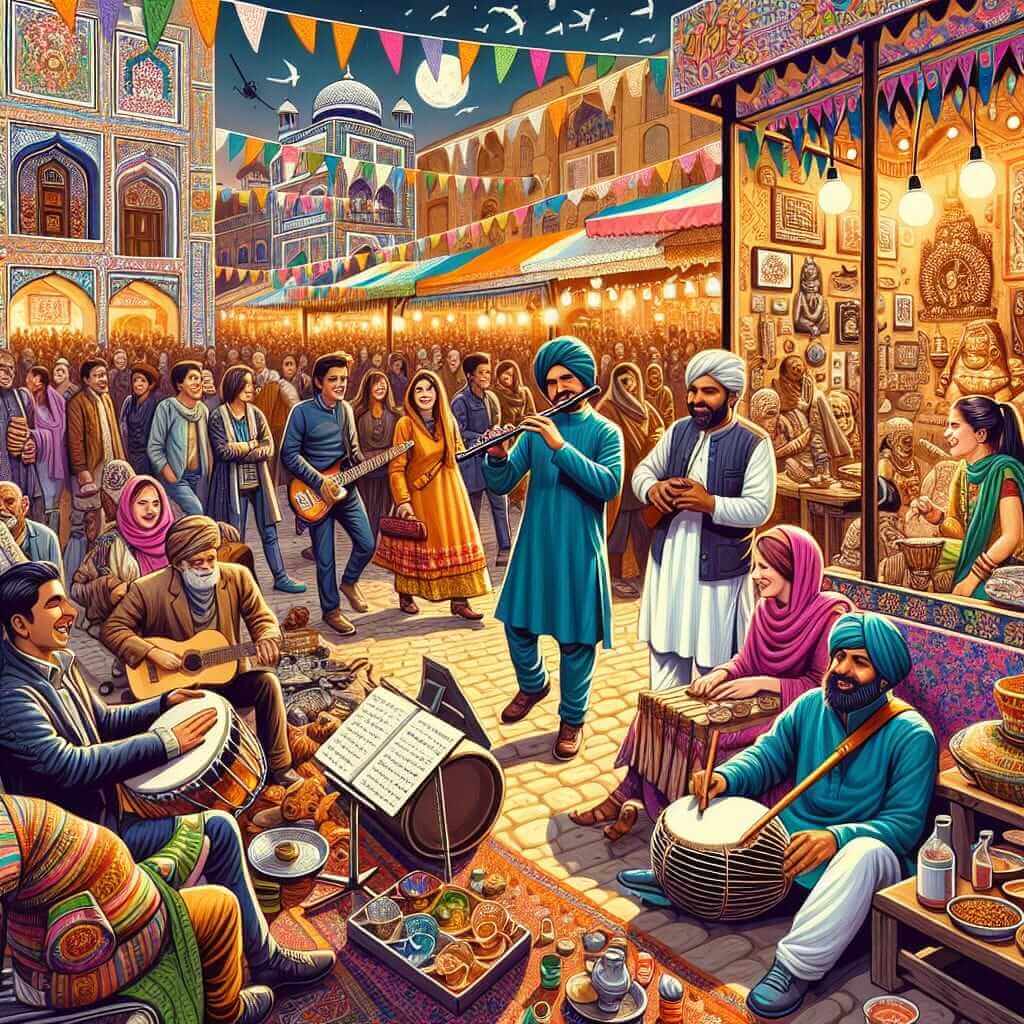Art and culture are frequently discussed topics in the IELTS Writing Task 2 exam. Understanding their role in economic development can help test takers develop a strong argument and generate a well-rounded essay. In this article, we will discuss the topic in detail and provide a sample essay to illustrate how to tackle this subject in the IELTS Writing Task 2.
Nội dung bài viết
Common IELTS Essay Questions on Art and Culture
Art and culture are prevalent subjects in the IELTS exam due to their significance in society. Here are some popular essay prompts related to this topic:
- Some people believe that art and culture are essential for the development of a country. Do you agree or disagree?
- How can art and culture contribute to economic growth?
- To what extent should the government invest in art and culture to foster economic development?
Sample Essay Prompt and Analysis
For this article, we will take the second prompt:
How can art and culture contribute to economic growth?
Analysis
When approaching this prompt, you should consider how art and culture drive economic growth from various perspectives, including tourism, job creation, and urban development. Here’s a detailed breakdown of what the essay might cover:
- Introduction: Introduce the idea of how art and culture influence economic development and briefly mention the points to be discussed.
- Paragraph 1: Discuss how art and culture attract tourism, which in turn boosts the economy.
- Paragraph 2: Explain how investment in art and culture leads to job creation and urban revitalization.
- Paragraph 3: Explore the role of art and culture in enhancing a country’s international image and soft power.
- Conclusion: Summarize the main points and reiterate the importance of art and culture in economic development.
Sample Essay
How can art and culture contribute to economic growth?
Art and culture play a pivotal role in the economic development of a country. These elements not only enrich the quality of life but also serve as significant drivers of economic growth. In this essay, I will discuss how art and culture contribute to the economy through tourism, job creation, and the enhancement of a country’s global image.
Firstly, art and culture attract tourism, which significantly boosts the economy. Historical landmarks, museums, festivals, and cultural events draw millions of tourists each year. For instance, cities like Paris, Rome, and Kyoto owe much of their tourism revenue to their rich cultural heritage. Visitors spending on accommodation, dining, transportation, and souvenirs contribute substantially to local economies. Additionally, cultural festivals, such as the Venice Biennale and the Edinburgh Festival, make these destinations major tourist attractions, leading to increased spending and revenue generation.
Secondly, investing in art and culture creates jobs and stimulates urban renewal. The arts sector provides employment opportunities ranging from artists and performers to curators and event organizers. Furthermore, renovating cultural venues and creating cultural districts can lead to urban revitalization. The Guggenheim Museum in Bilbao, Spain, for example, transformed a declining industrial city into a thriving cultural hub, attracting businesses and improving the local economy. These developments show that art and culture investment is not only a source of direct employment but also a catalyst for broader economic revitalization.
Lastly, art and culture enhance a country’s international image and soft power, attracting foreign investment and fostering diplomatic relations. Countries renowned for their cultural richness often have a more favorable standing on the global stage. Japan’s use of traditional arts and modern pop culture in its public diplomacy, known as “Cool Japan,” exemplifies this strategy. A vibrant cultural scene makes a country more attractive to investors and professionals seeking a rich cultural experience, further boosting economic growth.
In conclusion, art and culture are indispensable components of economic development. Through tourism, job creation, and the enhancement of a global image, they contribute significantly to the economy. Therefore, it is crucial for governments and communities to continue supporting and investing in these sectors.
Word Count: 359

Key Considerations When Writing About Art and Culture
Vocabulary and Grammar Tips
- Use a variety of sentence structures to demonstrate language proficiency.
- Employ advanced vocabulary such as “pivotal”, “revitalization”, and “diplomacy”.
- Make sure your essay is coherent, with each paragraph linking logically to the next.
Difficult Vocabulary
- Pivotal (adj.) /ˈpɪv.ə.t̬əl/: Of crucial importance in relation to the development or success of something.
- Revitalization (noun) /ˌriːˌvaɪtəlɪˈzeɪʃən/: The action of imbuing something with new life and vitality.
- Diplomacy (noun) /dɪˈploʊ.mə.si/: The art of managing international relations, typically by a country’s representatives abroad.
- Catalyst (noun) /ˈkæt.əl.ɪst/: An agent that provokes or speeds significant change or action.
- Soft power (noun) /ˌsɒfˈpaʊər/: A persuasive approach to international relations, typically involving the use of economic or cultural influence.
Conclusion
In summary, understanding the role of art and culture in economic development is crucial for achieving a high band score in the IELTS Writing Task 2 exam. This topic encompasses various aspects of economic growth, such as tourism, job creation, and international relations. By mastering the vocabulary and conceptual insights related to this subject, you can write comprehensive and compelling essays that meet the IELTS standards.
Additional Practice Prompts
To further hone your skills, consider practicing with these related prompts:
- To what extent should the government invest in cultural heritage to promote national identity? (related article: The role of cultural heritage in national identity )
- Discuss the influence of global tourism on local economies. (Related article)
By engaging with these prompts, you can build a comprehensive understanding of the themes commonly examined in the IELTS Writing Task 2 section.